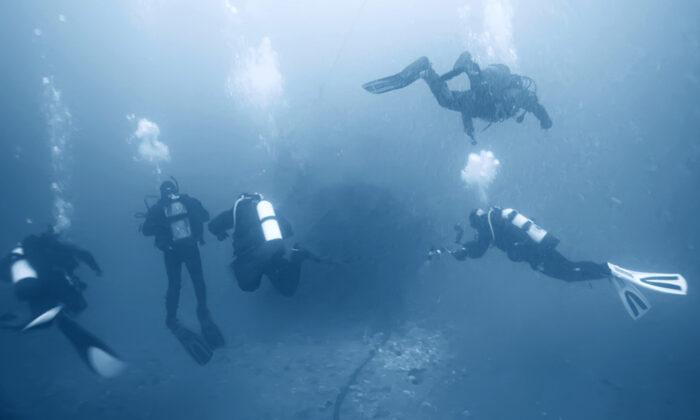Scientists believe that a 60,000-year-old underwater forest near the Gulf of Mexico may harbor vital components for the development of new life-saving pharmaceuticals. A species of organism found living in the preserved underwater wood is being investigated.
For tens of thousands of years, the forest lay undisturbed. Sea levels eventually rose and covered the trees, preserving and concealing them, until Hurricane Ivan hit the Gulf Coast in 2004 and uncovered the forest.
The hurricane’s 140-mile-per-hour winds disturbed the sediment that had kept the fallen cypress forest covered for so many millennia. As of 2020, the underwater forest, larger and older than others of its kind, lies approximately 60 feet beneath the surface of Mobile Bay off the Alabama coastline.
Professor Brian Helmuth of Northeastern University described the murky expedition as “like diving in chocolate milk.”
“It was really amazing,” Helmuth continued. “We dove around the edge of this ancient river bed. On our left were these remains of giant stumps and pristine wood coming out of the embankment ... it was almost an eerie feeling of stepping back in time.”
The extraordinarily well-preserved 60,000-year-old wood samples that the dive team collected were taken back to Dauphin Island Sea Laboratory, where testing unearthed a monumental discovery: among other organisms, the team discovered shipworms living within the preserved cypress wood, producing 100 separate strains of bacteria.
Twelve novel strains of biomolecules were sent for DNA sequencing. Scientists speculated that they may carry the potential to pioneer novel, potentially life-saving treatments for deadly infections, chronic pain, and even cancer.
Previous research on the bacterial content of shipworm biomolecules by the same team led to at least one antibiotic being investigated as a possible treatment for parasitic infections.
Haygood predicted that the research team would be able to publish their findings, and thus conclude whether some of the future life-saving pharmaceuticals have shipworms to thank for their existence, by April 2021.





Friends Read Free